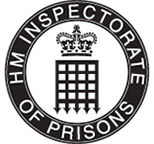Terms of reference for a rapid review of the policing of public disorder – Tranche 2
Contents
Print this document
Background
On 29 July 2024, three young girls, Bebe King, Elsie Dot Stancombe and Alice Da Silva Aguiar, were killed in a knife attack in Southport. In the aftermath, far-right groups used social media to spread incorrect and false information, and to mobilise demonstrators. Violent disorder broke out in the town.
In the days that followed, violent disorder affected other towns and cities throughout the UK. The police made more than 800 arrests in the first few weeks after the disorder.
On 6 September 2024, the Home Secretary wrote to us under section 54(2B) of the Police Act 1996 to carry out a rapid review into the events following the attacks in Southport. We are carrying out our review in two tranches (parts).
On 18 December 2024, we published our report, ‘An inspection of the police response to the public disorder in July and August 2024: Tranche 1’. This examined capacity and capability, co-ordination and mobilisation, and well-being.
Rapid review into the policing of public disorder – Tranche 2
In our Tranche 2 review, we will examine the police service’s arrangements for rapidly learning lessons from these outbreaks of violent disorder. We will also assess how well prepared it is to respond to future similar outbreaks.
The police service’s use of an intelligence-led approach
We will assess:
- how the police service gathered and managed relevant intelligence about emerging threats of violent disorder from different sources, including those that are online and within communities; the likely value of these sources when the police service is responding to a rapidly developing situation; and the national structures and processes the police service used to collate, analyse and share intelligence; and
- the extent to which the police service recognised rising community tensions before the disorder and reacted to changes in intelligence during the disorder.
The police service’s arrangements for tackling online misinformation and disinformation
We will assess:
- how the police service monitors, assesses and responds to social media and online content, and how it deals with the consequences of social media content that contains misinformation and/or disinformation;
- the methods the police service can use to correct misinformation and disinformation rapidly;
- how the police service can take action against people who use social media to influence and incite others to take part in violent disorder;
- how the police service co-ordinates its public communications so they are consistent and effective; and
- how the police service identifies misinformation and disinformation that promotes and incites violence and refers it to technology companies so they can take appropriate action, and whether current systems and processes help the police to deal with harmful online content.
Crime investigations
We will assess:
- how dealing with the violent disorder affected forces’ capacity and capability to maintain effective policing services, investigate crime, and support victims and witnesses;
- how forces responded to the additional investigative demand arising from the disorder;
- the effectiveness of national police arrangements in support of these investigations; and
- how the police service and criminal justice system partners worked together to bring offenders to justice.
Back to publication
Terms of reference for a rapid review of the policing of public disorder – Tranche 2




